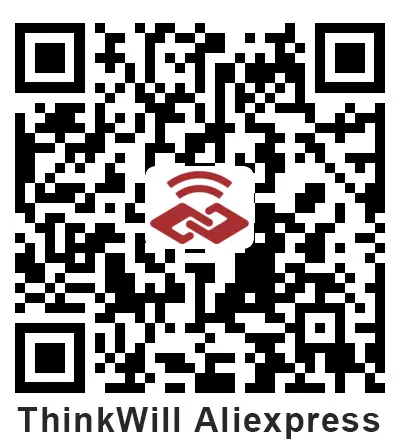2023-07-18
The Internet of Things (IoT) has the potential to revolutionize the way we interact with the world around us. From regulating the temperature of our refrigerators to tracking packages and livestock, providing faster security and monitoring, and enabling smart grids for entire cities, IoT brings intelligent transformation for both personal and industrial purposes. It holds significant value in terms of providing greater convenience, higher efficiency, improved work quality, and better utilization of big data. Digital transformation has become crucial for business growth, societal development, and economic expansion, with IoT at the core of this transformation.
The number of IoT device connections is expected to continue growing in the coming years. According to a report by IoT Analytics, the global number of active IoT endpoints reached 14.3 billion in 2022. IoT Analytics predicts that by 2023, the global number of connected IoT devices will grow by another 16% to reach 16.7 billion active endpoints.

IoT modules, small computing devices that allow physical objects to connect to wireless networks, are one of the most critical components in any IoT deployment. These foundational building blocks continuously sense, collect, store, and transmit data to enable wireless communication between devices and networks, making them a vital part of IoT solutions. However, with numerous module solutions and vendors available in the market, choosing the best module product becomes essential for successful IoT deployments.
Understanding Your Project
Before selecting the right module, it is important to understand the following aspects of your project:
Manufacturers typically list modules based on various parameters, including the radio frequencies they operate on, data rates (such as bytes per second), range, and certifications. Therefore, filtering your IoT module search based on parameters that meet your specific IoT requirements is crucial.
Here are some of the most important parameters to consider:
Network standards refer to the type of network. Mobile communication relies on radio waves, and to efficiently utilize spectrum resources, radio frequencies are divided into different bands, like lanes on a road, for different communication standards to travel on their designated lanes. In order to facilitate communication, each frequency Band that has been divided is also replaced by band plus numbers or direct B plus numbers.
The combination of network standards and frequency bands forms the networks that a module product can support. If a product supports all network standards and frequency bands in a specific country or region, it is considered a global product for that area, allowing seamless connectivity within the mobile network coverage area.
Communication interface technology is crucial in IoT systems, including interconnecting various communication networks, enabling various terminal devices to connect to the network, and adapting to different communication protocols and software.
Depending on the actual scenarios involved in IoT communication, IoT communication interface types can be divided into several categories. The first two categories involve long-distance wireless communication based on cellular communication technologies such as 2G, 3G, 4G, 5G and NB-IoT, as well as non-cellular long-range wireless communication methods such as Lora and Sigfox. The third category includes short-distance wireless communication technologies such as Bluetooth, UWB, NFC, RFID, WiFi, and Zigbee. The fourth category covers wired communication, including various serial communication interfaces such as USB, RS485, RS232, RS422, Ethernet, and MBus communication methods.
IEEE 802.11 represents the most commonly used series of wireless LAN standards worldwide. Today, there are many 802.11 series standards in use, each with its own specifications. When selecting these protocols, three key factors need to be considered: data rate, range, and power requirements. Protocols like 802.11n, 802.11ac, and 802.11ah offer faster data rates for multimedia IoT applications, while protocols like 802.11b/g have advantages in reducing power consumption. Therefore, the most suitable wireless IoT module for your project depends on your specific project requirements and use cases.
The IEEE 802.11 standards operate within designated frequency ranges and are divided into multiple channels. Each country has its own rules and regulations to determine the usage, channels, and maximum power levels for these frequency bands. ThinkWill's upcoming IoT modules will support both 5GHz and 2.4GHz frequencies, providing greater flexibility in operating frequencies for IoT devices and enhancing interoperability and compatibility.
Many wireless IoT modules produced by different vendors have identical specifications in terms of power consumption, size, and functionality. To find the best IoT module, you need to delve deeper beyond the comparison data table of module specifications.
ThinkWill's series of wireless router modules for IoT modules offer plug-and-play functionality, supporting customers with development-free and light development features. They enable rapid deployment of application products without the need for secondary SMT and hardware/software development, helping wireless terminal product manufacturers reduce the product design and production cycle from the typical 3-5 months to just 20-30 days. The wireless router modules placed in the terminal are interchangeable, facilitating quick iteration and upgrades of wireless router terminal products.
ThinkWill is soon launching new IoT modules to enhance its wireless router module product lineup. The new products will feature added support for WiFi 6 and dual-band WiFi. Additionally, they will provide a wider range of interfaces, including USB 2.0, UART, Ethernet ports (supporting dual ports), and SIM card slots (supporting up to three SIM cards). The series products have standardized and universal interfaces, making it convenient for external wiring, accessory compatibility, and the development of product series by customers.
In addition to the wireless router terminal market, ThinkWill's wireless router modules are also applicable to the transformation of various IoT wireless application projects in different industries. They support customers in customizing their business requirements by leveraging the "development-free" and "light development" features of the wireless router modules. For more information, please visit: IOT Module
The Internet of Things presents tremendous opportunities for device manufacturers worldwide. In fact, depending on your specific use cases and IoT applications, you may require options that differ entirely from what ThinkWill's products offer. However, at least now you have a better understanding of the different features and options available in IoT modules, empowering you to decide what suits you best.
How to Distinguish DTUs, Routers and Industrial IoT Gateways
